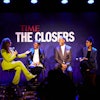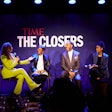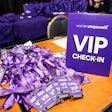As other apps come and go, email remains king of communication—for better or worse.
“Email is the cockroach of the internet,” says Jocelyn Glei, author of “Unsubscribe,” a book about managing distractions at the workplace.
Her statement has at least two meanings. One, and most pertinent to the book’s premise, is that email is often a manager’s enemy when expecting workers to accomplish their goals. Secondly, Glei is referring to email’s lasting power. Indeed, in the age of Slack and its Facebook-powered competitor, Workplace, email remains the predominant mode of online and interoffice communication.
Glei estimates people check their email about 11 times per hour and spend nearly 30 percent of their time at work looking at and responding to email. You’ve probably already taken one break from this story because of a phone notification. (Don’t worry; we won’t judge.)
The former planner of 99U conference, Glei says email addiction is out of hand. "Email is designed for nonurgent communication,” says Glei, who is planning a new events series. “We use it in a very different manner.” Namely, many people feel compelled to respond right away to a message, even if another task is more pressing.
Out to make the world a more productive place, Glei offers these suggestions to balance workflow.
Set expectations.
Office supervisors who get bogged down sometimes plow through email on the weekends, as Glei used to do. “I would get anxiety on Sunday afternoons because I would get 10 emails and feel like I needed to deal with them [right then],” she recalls. Glei recommends managers give employees realistic timeframes for responding to messages.Set adjustable routines.
During nonbusy seasons at work, it’s relatively easy to avoid email. But weeks and days before a conference or another big deadline, that’s not realistic—as Glei knows from her planning days. Senders will need your responses much sooner during those times, so plan to respond to messages more frequently. “It’s important to think about anticipating the shifting nature of what tasks you’re going to have to be handling,” she says.Try alternatives.
Have something pressing to discuss? Opt for a face-to-face conversation. Trying to reach a group of people with similar tasks across time zones? Slack may be more effective than email. Looking to reconnect with an old business contact? Message them on LinkedIn. That said, there are times when email does work best, says Glei, including reaching out to prospective new clients or attendees, or inquiring about potential speakers applying for a job.Why are we hooked?
Glei says email remains a powerful time suck because it taps into the part of our brain that seeks instant gratification. “Email is like a slot machine,” says Glei. When you pull the lever, you often get junk email or (worse) an assignment you don’t want. Occasionally, though, you’ll get a note from a long-lost friend or other good news that keeps you coming back. Additionally, cleaning out an inbox scratches your itch to accomplish something. But even if you read all your messages, it’s less productive than working on another project when you consider the amount of time you’ve spent achieving inbox zero. “That feeling of progress is false in a lot of ways,” Glei says.















